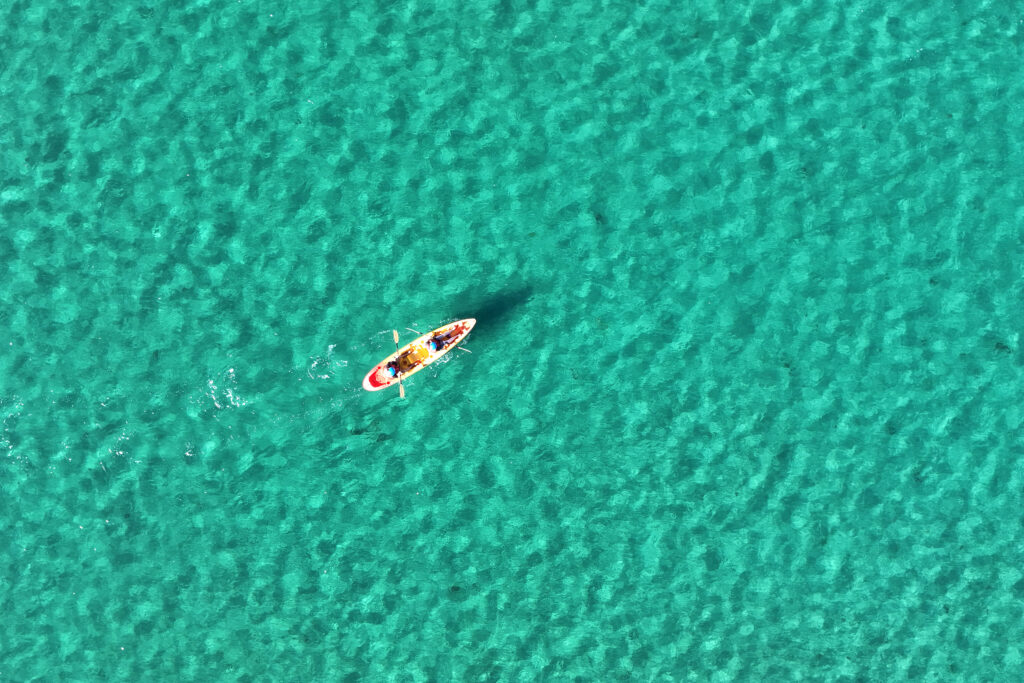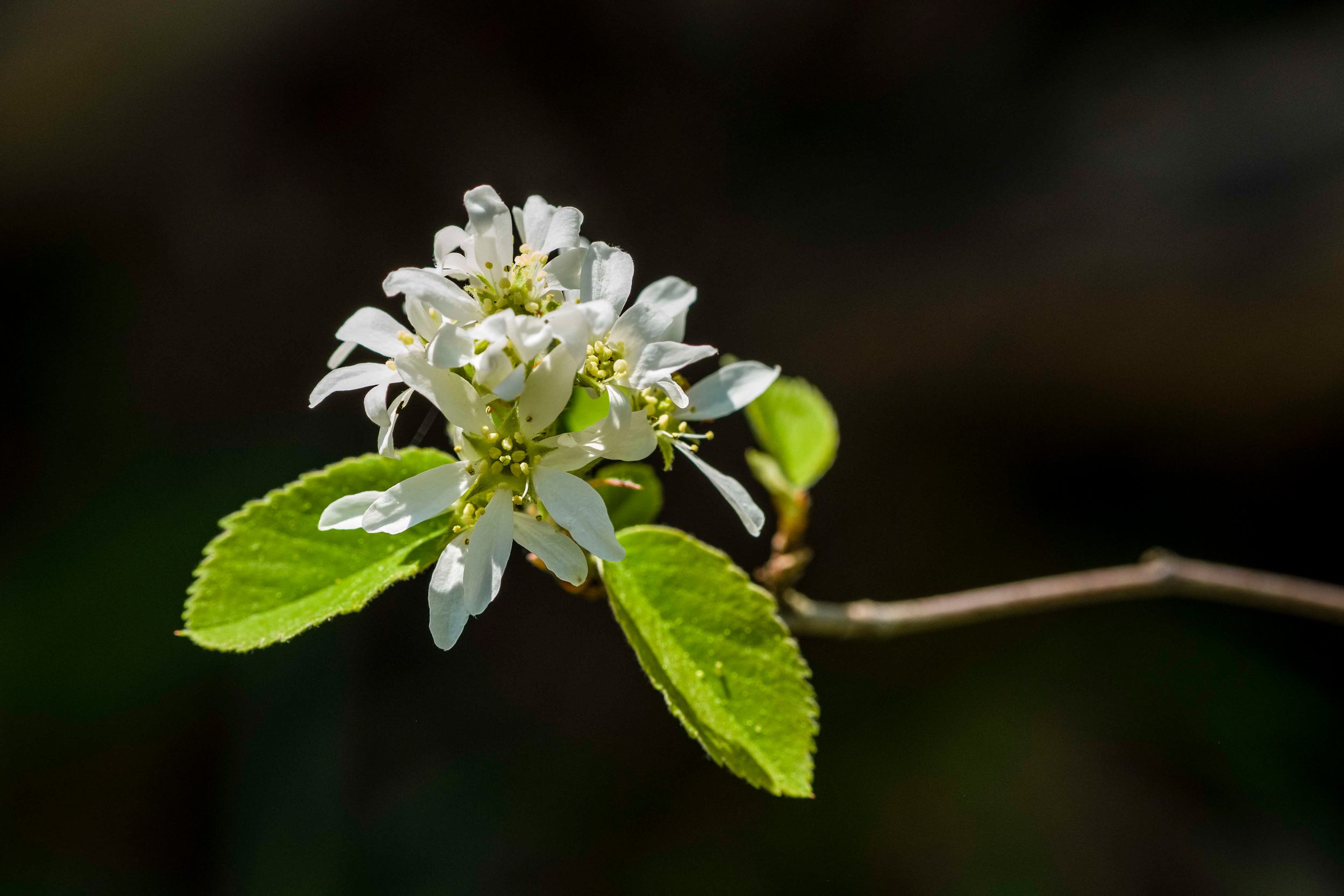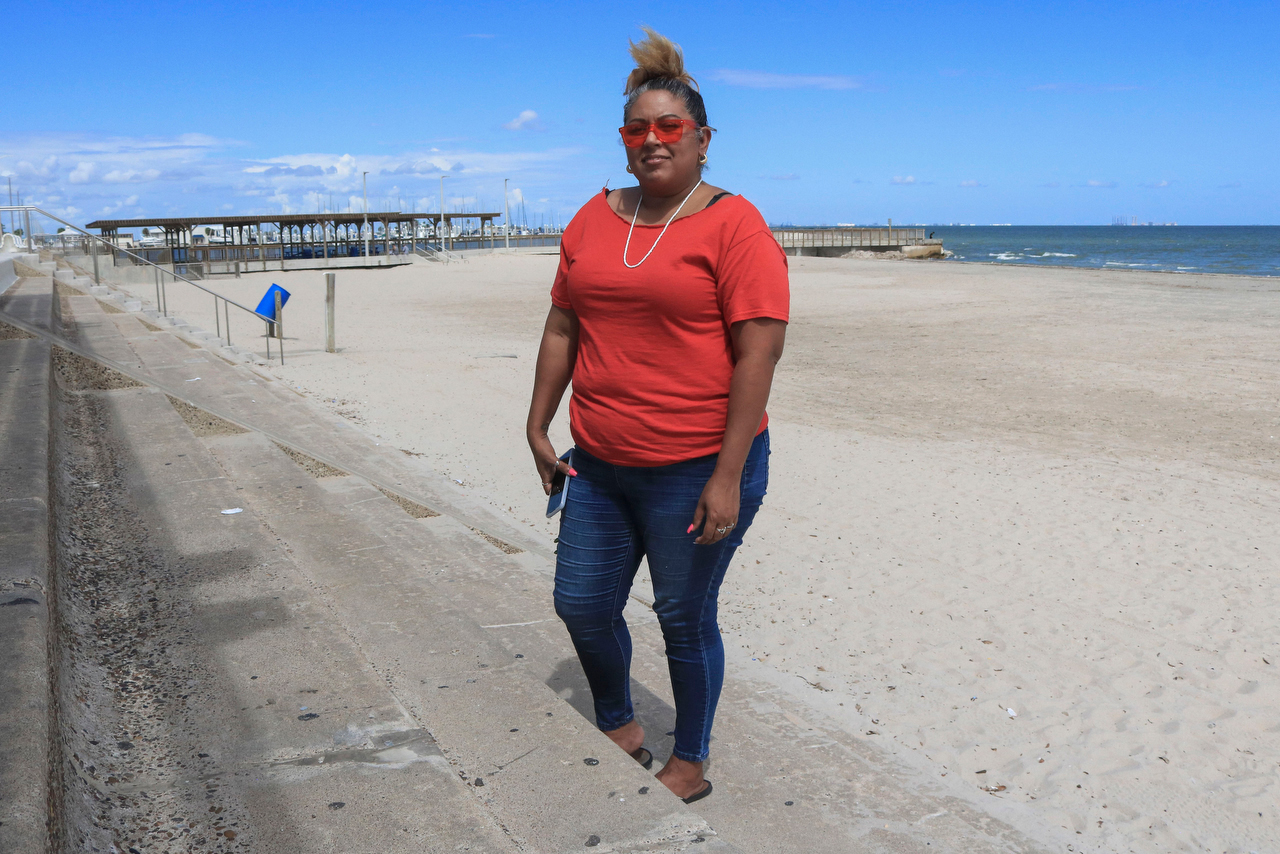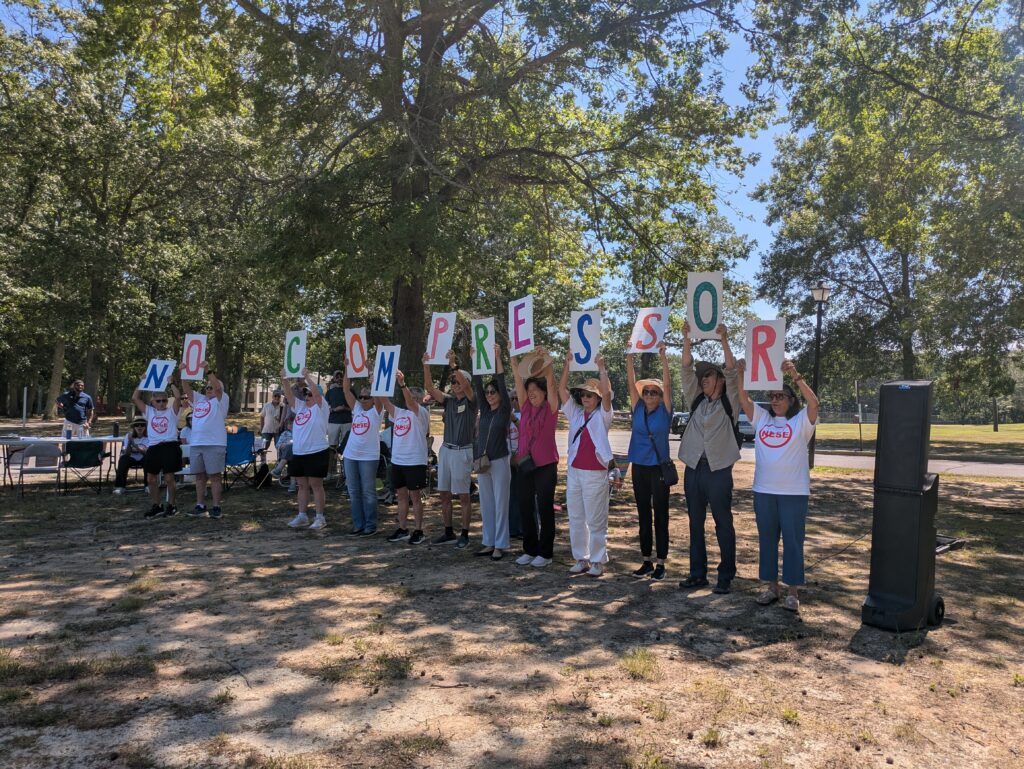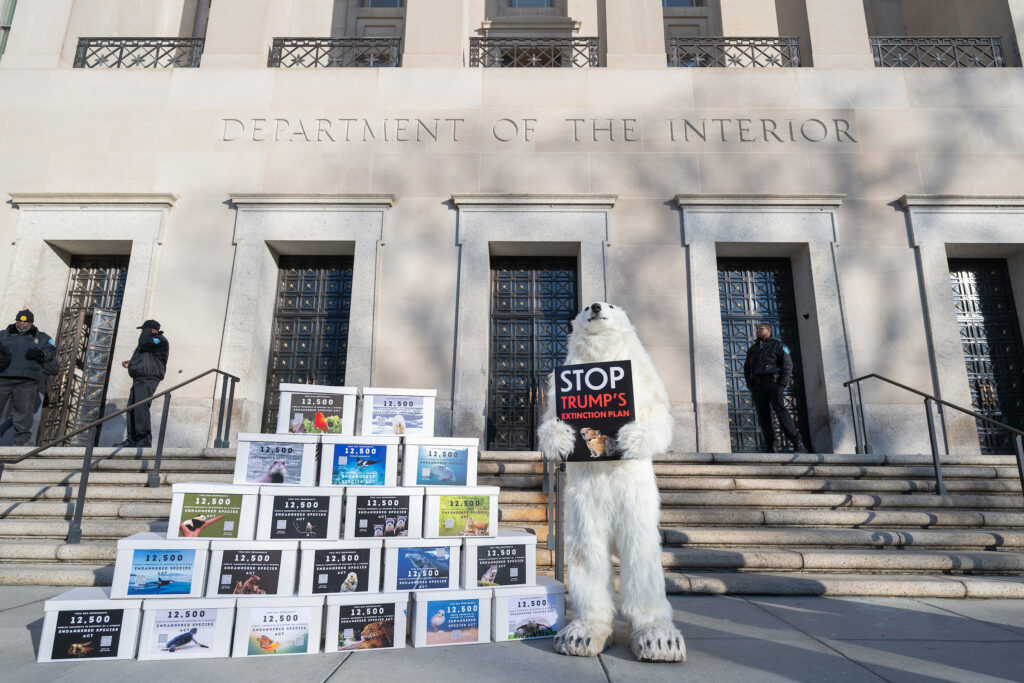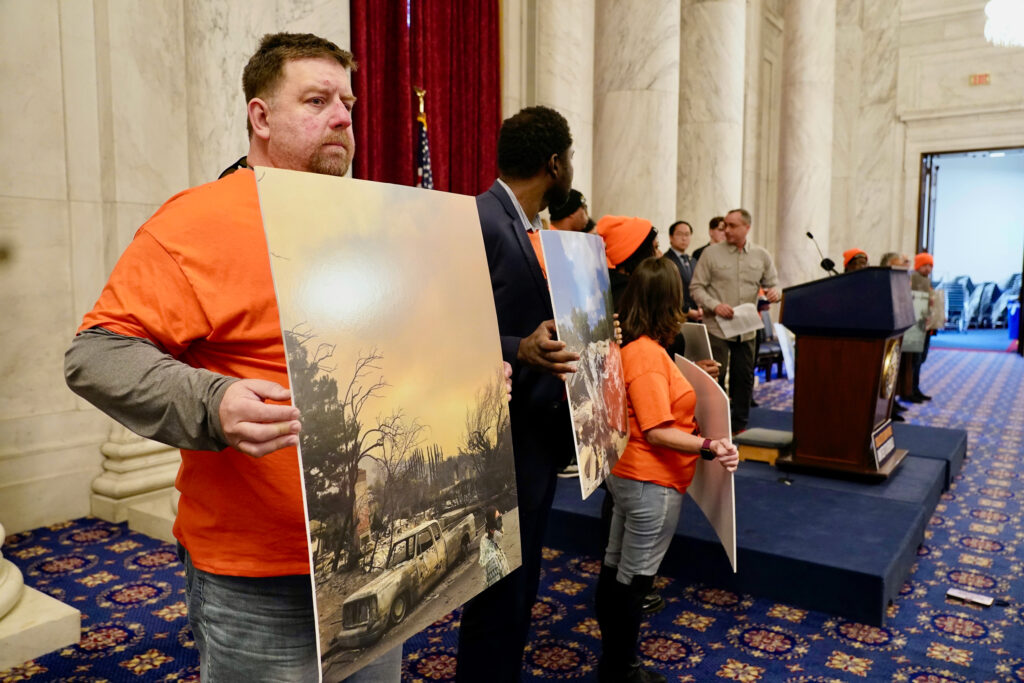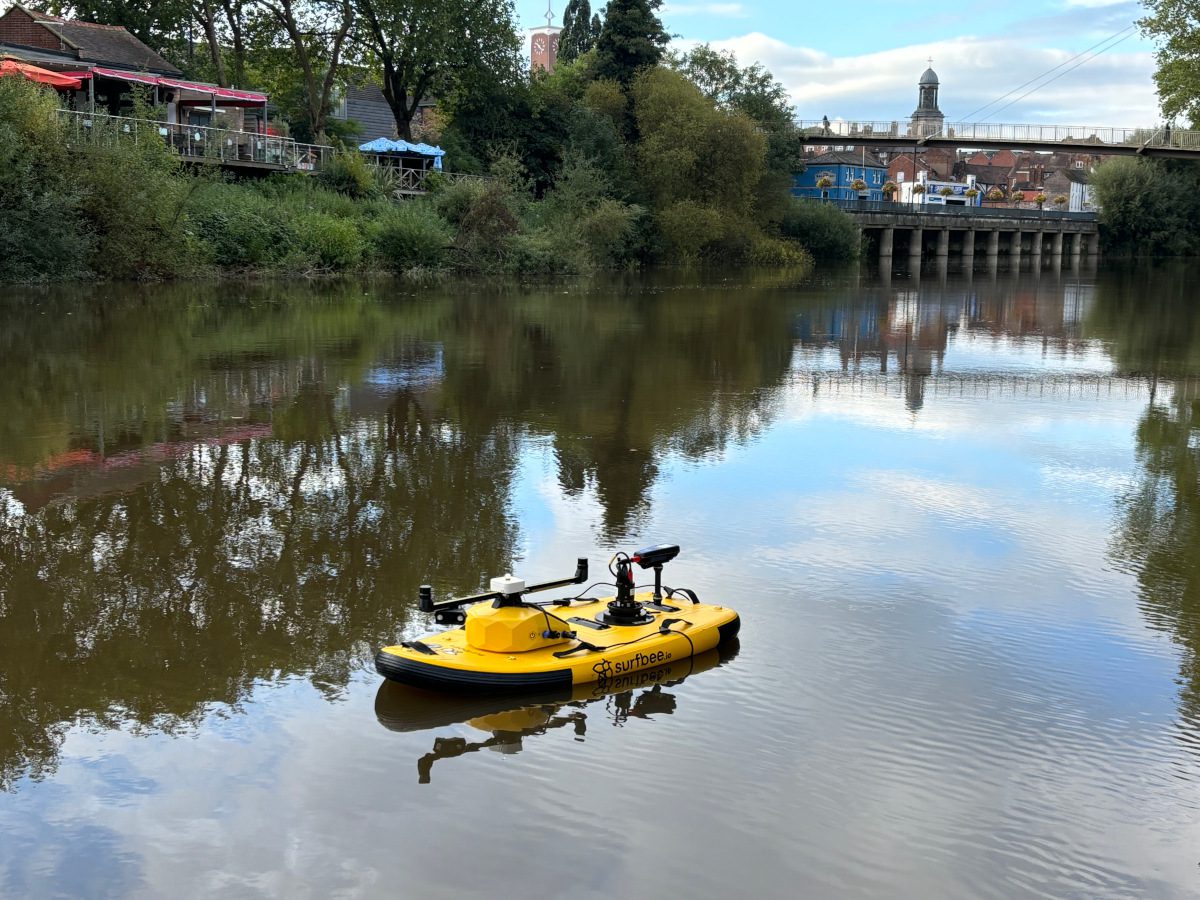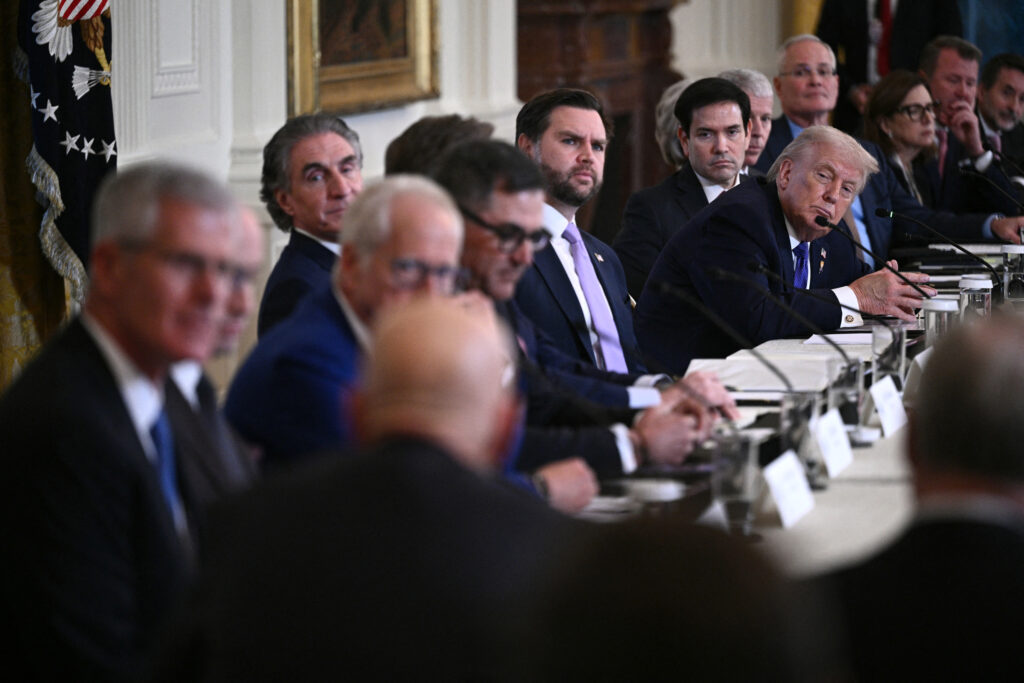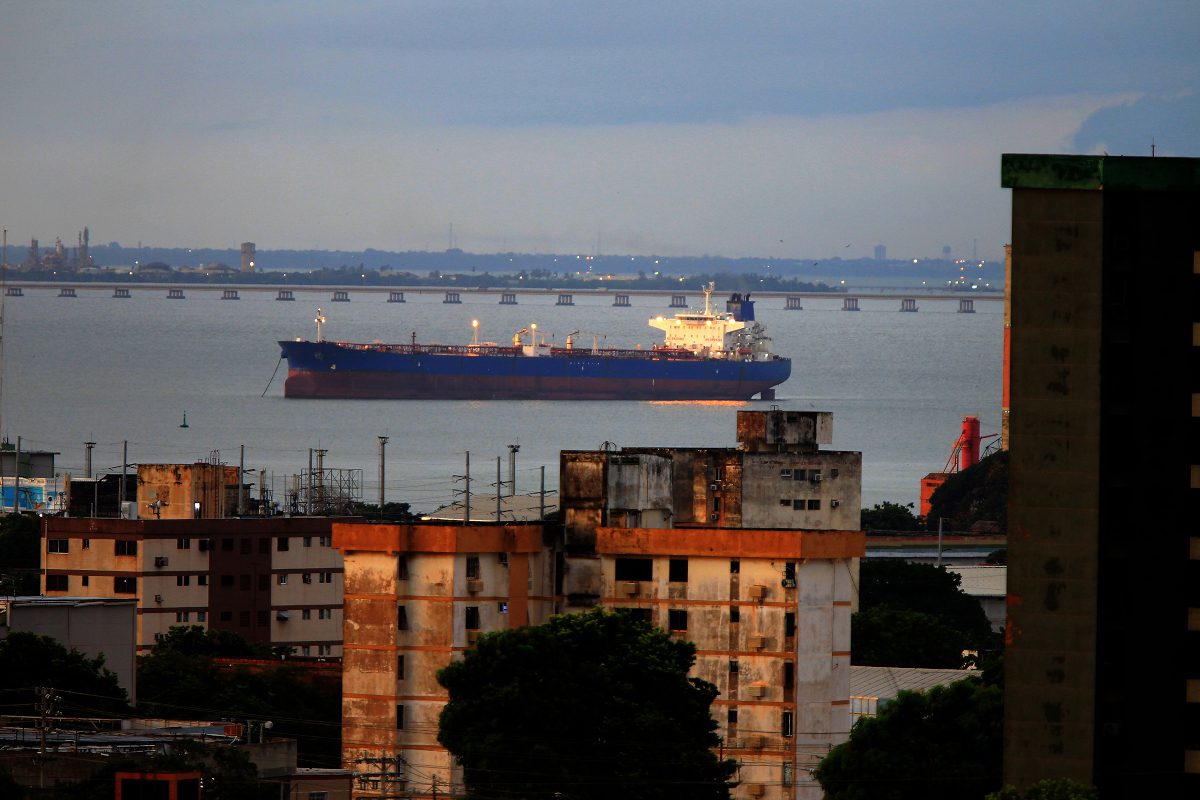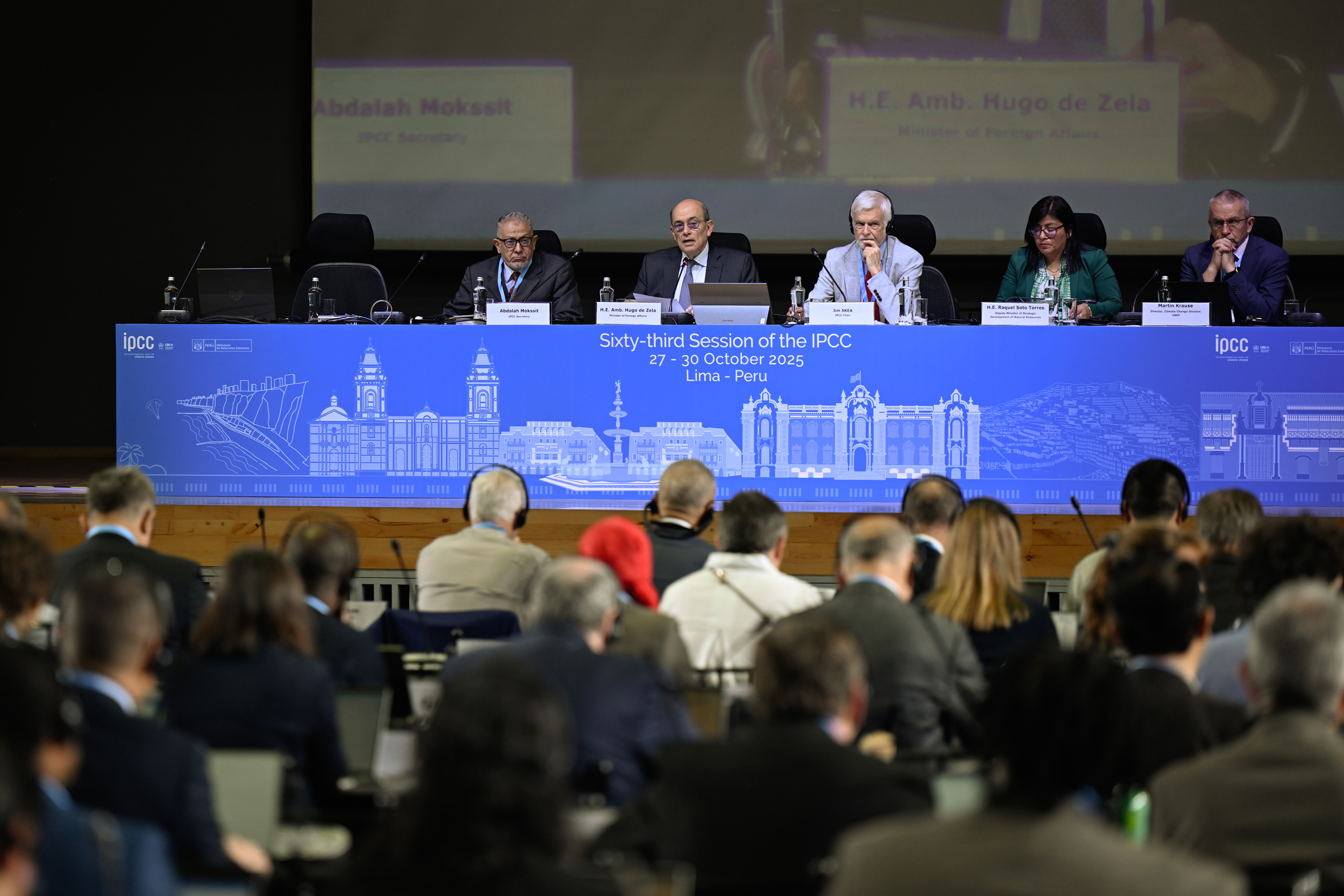We were bombing up I-10 over Lake Pontchartrain, one week to the day after Hurricane Francine passed the same way with its tempest winds and a month’s worth of rain. Chenier “Klie” Kliebert, a Native New Orleanian so many generations back the family had lost count, drove comfortably while I sat shotgun and wide-eyed at the utter lack of land beneath the highway. A waterworld in all directions. Only pilings and trust held us up.
“There used to be a lighthouse right there where you see those sticks,” Kliebert said, pointing to our right. “We lost that in a storm.”
Kliebert (pronounced “klee-BEAR”) wore a black T-shirt and shorts, crew socks and worn-in boots. A swoop of salt-and-pepper bangs curled out under the rim of their khaki baseball cap. You might assume Kliebert was around 30 based on a mostly unlined face, or that their soft brown eyes, always-pink cheeks, solid frame and abiding, generally amused manner somehow added up to a check-the-box race or gender, but you’d be off. Hours with Kliebert felt like the American assumption machine was busted. There wasn’t a label that stuck.
Perhaps their X bio said it best: “LA gumbo human. J’existe.”
Kliebert was drained that day, that was certain, having just led a team of disaster responders through the grind of prepping, enduring and recovering from a Cat 2, direct-hit hurricane last Sept. 11. Francine had been a non-evacuation storm, but everyone still lost sleep as transformers blew with turquoise sparks. After the worst of it passed overnight, the city faced a Louisiana-hot day with ankle-high flooded streets, branches down, near-barren grocery shelves and no power for AC. New Orleanians know too well that the storm itself is never the apex of danger—it’s the week after.
Kliebert’s team, a nonprofit climate justice group called Imagine Water Works, was concerned mostly about the heat. Working from a small urban farm in the Seventh Ward just south of Gentilly, they arranged delivery of a solar-powered generator, answered questions from storm-stressed neighbors on IG Stories, posted a “Community Power Map” of phone charging stations, ran a mutual aid page on Facebook and directed folks to their 2024 Hurricane Season Guide, which got a quarter million hits during the storm. Drawing from pallets of disaster supplies, they organized a give-away of ice, cooling bandanas, protein shakes and MREs (self-heating meals) for anyone who could drive to the farm. Carloads of LGBTQ+ Louisianans pulled up, knowing it was a no-questions-asked distribution. In down moments, the team cleared wind-crushed banana leaves around the farm’s perimeter and marked places where perturbed fire ants, flushed from the soil, were erecting new nests. No one needed bitten, burning ankles.
Two more Gulf storms would soon torment the South: the historic Helene, which tore up Western North Carolina and left an unimaginable $50 billion recovery bill, and then Milton, a monster cyclone that ramped up so fast, a seasoned weatherman cried on the air attempting to describe it. But that was all to come—one disaster at a time was plenty on a farm where they joked that sleep was for winter, once hurricane season spun itself out.

I was curious about how they gin up the inner resources to keep providing sanctuary, blow after blow. I’d first met Kliebert there eight months earlier, when the National LGBTQ+ Task Force held its annual conference in the touristy part of New Orleans. I was reporting on a day-long “Queer Climate Justice” seminar, led in part by Vanessa Raditz, a scholar and filmmaker determined to connect people trying to shelter themselves from disastrous weather, political storms included.
Kliebert was one of the speakers, opening their remarks by admitting to some PTSD sitting there in the shiny Hilton Hotel, where thousands of Hurricane Laura evacuees were housed amidst the pandemic stress of 2020. I was moved by Klibert’s stories of super-tactical responses for evacuees that year—at one point, they’d helped rig ATMs to distribute cash without debit cards so displaced families could buy gas to get home for FEMA damage assessments. But something else intrigued me too: Kliebert’s presence. They had a quiet way of speaking that made calm feel contagious, even when the topic was crisis prep. Kliebert told the audience, “We want to leave you with joy and a sense of belonging even though we are doing hard stuff.”
Who was this young Southerner with the bearing of an elder? As storm season neared, I wrote to ask if I could visit Kliebert’s team and observe, come what may. Hurricane Francine landed four days before me. After watching them all in action that recovery week, I finally sat down by Kliebert’s desk in a converted shipping container and asked what I’d wanted to know all along.
“I sensed such a calm about you back in January, and it’s even more evident to me now. Where does that come from?”
Kliebert grinned a little, eyes on their laptop screen. “It might just be the autism. I can come across as oddly chill.”
“Ohhhhh,” I said, and we both laughed, knowing it wasn’t the whole answer.


That’s when Kliebert suggested we take an afternoon road trip—there was another farm I should see.
“My parents are that way into the water more, and my grandparents will be towards the land,” Kliebert said in the car, two inked arms resting on the wheel. I asked about those tattoos, a shrimping net on the inside of one forearm and a log bonfire, ablaze, on the other. These were tribal symbols, Kliebert told me, older than any written history of the diverse peoples who’d made homes in those wetlands.
We headed 40 miles up to Paulina, Louisiana, in St. James Parish. Once we hit rural roads, the air turned acrid.
“Smell the Petrochem right now?” Kliebert said. I did, even though the windows were shut tight. Nothing to do but keep breathing. The beauty outside was a distraction—sunflowers, porch swings, and pecan groves on our right and the rising slope of a levee on our left. Just over that mound, the Mississippi. Kliebert told me their great grandfather had been a ferryman. The family would catch fish and grow things, mostly tobacco and tomatoes, then float their harvests down-river to sell at the French Market in New Orleans. Kliebert slowed down and pulled into a gravel driveway on our right, siding up to a deserted farmhouse.
“My paw paw was born in this house,” Kliebert said, shutting off the engine.
Things were moldy inside, big black splotches on walls and ceilings…but somehow, it didn’t feel creepy. Filtered sunlight and remnants of a lively Cajun family filled each room: hand-crafted furniture, bedrooms painted pink and green, pots stacked in the kitchen, and a yellow-edged picture-calendar nailed above the sink, open to September 2005.
“Katrina,” Kliebert said. We flipped back a few months and saw small notes in loopy cursive: Mowed grass. Planted strawberries today. Windy.
Life before catastrophe.
Out behind the house was one of the tallest barns I’d ever seen, nearly three stories but now skeletal and half-collapsed. Kliebert said it stood just fine until Hurricane Ida’s 150 mph winds in 2021. We stepped through the frame and were hit by an ancient, earthy smell—tobacco leaves had been hung on wire lines to dry in that barn, a scent more stubborn than storm winds.


In that late-September afternoon haze, I wondered if Kliebert felt sad at the accumulation of losses there around us: poisoned air, a house too far gone with water damage, the evacuated farm. But as we headed back to the car, they pointed toward the Mississippi and said that every Christmas Eve, neighbors would build bonfires along the top of the levee, lighting the way for Papa Noël. Kliebert still returned for those fires every year, rooted as ever to this stretch of land Northern environmentalists had renamed “Cancer Alley.”
“I’ve been trying to flip that narrative,” Kliebert said. “It’s about sacredness and life and family and so much culture. It’s such a large part of why I do all this work without doom.”
“Queer and Present Danger”
Before DOGE offed the project in 2025 citing “evolving priorities,” the National Oceanic and Atmospheric Administration (NOAA) kept a detailed data set of U.S. weather disasters leaving more than a billion dollars’ damage. Last year, we had 27, Francine and Helene included. While there’s a general sense that first responders do the best they can, Americans have seen enough wreckage now to understand two things: the government is not swooping in to save you or your stuff, and if you are vulnerable in some way before the storm hits, you’re going to have a rougher time recovering. Neighborly goodwill may be the only safety net in the days, weeks and even months post-disaster…just ask Western North Carolina.
But relying on local networks of family, neighbors and volunteers presents real problems for anyone isolated—or shunned—from community life. Case in point: if you are one of approximately 16 million Americans who identify as LGBTQ+ (a number rising fast), you are nearly twice as likely to be displaced after a storm as someone who’s straight.
That blatant inequity, now making its way through disaster journals and state emergency plans, was first amplified by a 25-year-old grad student brand new to Ivy League academia. Leo Goldsmith, the shy, bright Midwestern kid of a Colombian Catholic mother and a Jewish father, entered the Yale School of the Environment in 2018, interested in the ways climate change affected the physical and mental health of vulnerable populations. Goldsmith knew you could be marginalized multiple ways —he’d experienced it growing up Latino and then coming out as LGBTQ+ at age 18, though he wasn’t sure at first which letter was the best fit.
“I didn’t come out with my transgender identity until senior year of college,” Goldsmith said. “Something just clicked, a very overwhelming feeling I haven’t been able to put into words yet.”


The relief and promise of that realization made some things easier for Goldsmith, like answering questions from family members. But a lot of things got harder, from medical hurdles to gender markers on IDs. He was navigating being treated as an “other” in the work world and academia too. In 2018, Goldsmith, then two years in on hormone therapy, was the only open trans student at the Yale School of the Environment.
“It’s a huge school,” said Michael Mendez, one of Leo’s first professors. “At the time, I was the only Black, Latino or Indigenous in the entire school of faculty and instructors.”
Professor Mendez, who’d written a book titled Climate Change from the Streets, was teaching a class on environmental justice. Also, he was out—a gay man. Goldsmith gravitated to him.
“When I took Mike’s class, something I kept thinking about was, this is very important to me and I haven’t seen it anywhere,” Goldsmith said.
Mendez taught the history of homophobia among environmentalists in the 1980s and ‘90s, when some suggested global warming was the Earth “cleansing itself” from scourges like HIV. Goldsmith wondered if biases like that had found their way into modern climate policies, especially disaster response. He started combing through data, aiming his final class project at answering the question.
“Leo did this amazing presentation and paper,” Mendez said. “I told him, ‘You really have to do something about this. Everything I’ve read has been theoretical and jargon, but this was really good research.’”
Goldsmith, encouraged by those words, was blown away by what Mendez said next: “We should do an academic paper together.”
“It really speaks to the importance of having representation among faculty in academic institutions,” Goldsmith said. “I never thought I could write or publish an academic paper. That’s not something anyone had ever told me.”
They began. Mendez introduced Goldsmith to the rigor of preparing a peer-reviewed article for a mainstream scientific journal, and invited a third author to join them—a Southern, nonbinary scholar deep on environmental theory, Vanessa Raditz (the same thinker who’d launched Queers4ClimateJustice).
It took the team two years to draft the paper, then came revisions. More drafts. More networking with health and disaster experts. Amid all this, COVID hit, pressing the point that anyone at-risk already was less likely to survive. And the drumbeat of severe weather events pounded on—Hurricane Laura, high numbers of heat-related deaths in the Southwest and more than 7,000 wildfires per year in California. Goldsmith, Mendez and Raditz tried to stay focused.
“I had a lot of anxiety during calls with Mike and Vanessa, feeling imposter syndrome,” Goldsmith said. “But the writing was so cathartic for me, to really be putting out the thoughts that I have with evidence from the literature. The paper has a story and specific recommendations for disaster professionals, what could be done differently.”




Their story began with big questions. Why were LGBTQ+ people more isolated, endangered and delayed in getting back to safe-and-sheltered conditions when disasters struck? And why, if you happened to be queer and a person of color, did the possibility of harm after storms multiply exponentially?
The authors blew apart “the myth of gay affluence,” noting that the majority of America’s LGBTQ+ population were not wealthy, white couples living in stately homes. Queer and trans people in the U.S. were more likely to be isolated from family and community networks because of homophobia, and they made up the majority of young runaways. (As Dr. Mendez once explained it to me, “LGBTQ+ from a Latino family? If you come out, you can often become homeless.”) Housing and job discrimination set them up for lower-income lifestyles, so even if they did own a place, there wasn’t extra money for things like flood insurance or fire prevention measures.
The team’s research also revealed that in cases of evacuations, it was harder for queer people to find even temporary refuge. Emergency shelters are often set up in churches or religious nonprofits like The Salvation Army, places where a LGBTQ+ person can feel at the very least unwelcome, but more often, misgendered and unsafe. (Imagine a trans woman being assigned a cot in a room with dozens of displaced men.) And the team found reports of LGBTQ+ people being over-policed after Hurricane Harvey in Houston, the same storm that prompted Ann Coulter to tweet: “I don’t believe Hurricane Harvey is God’s punishment for Houston electing a lesbian mayor. But that is more credible than ‘climate change.’” (Not in the paper but worth noting, Mayor Annise Parker’s comeback: “Darn it, I thought no one knew I had a superpower over weather.”)
By 2022, the paper had a mind-worm title and a spot in Disasters, the leading academic journal in emergency management circles. “Queer and Present Danger: Understanding the disparate impacts of disasters on LGBTQ+ communities” ran in the October issue.
“I remember tearing up right when I saw it,” Goldsmith said. “My name was first author.”
Goldsmith, Mendez and Raditz had launched a movement. Their study was among the journal’s top 10 most cited articles from 2022-23, and responses to it rippled through academia, government, and the nonprofit world. Mendez, who by then had left Yale to teach at the University of California in Irvine, was appointed to a two-year term serving on FEMA’s National Advisory Council. Goldsmith moved to Washington, D.C. and took a job as a climate and health specialist for the government contractor helping to produce The Fifth National Climate Assessment. He and Mendez helped write the assessment, which, for the first time in history, mentioned LGBTQ+ populations:
Sexual and gender minorities (SGMs) face social, economic, and health disparities and, as a result, experience greater risk of harm from climate change. SGMs are found in all populations, including frontline communities, and can experience compounding disparities and impacts on the basis of sexual orientation and gender identity.
Only a few words, but footnoted with data and academic backup, which in the policy world meant attention and funding. Real-life changes mattered a lot to the scholars—they knew if LGBTQ+ populations were ever going to be at less risk after disasters, it would take both legislation and shifts in the way nonprofit groups like the Red Cross and Salvation Army operated. In late 2023, they published a shorter, action-oriented “policy brief” titled Amplified Harm: LGBTQ+ Disaster Displacement. It got pick up—a California state senator from San Diego, Steve Padilla, introduced a bill requiring the state to update its official Emergency Plan to “to equitably serve LGBTQ+ communities during an emergency or natural disaster.” Gov. Gavin Newsom signed that bill into law on September 20, 2024.
This was traction and a lot of it, but a political storm larger than anything the three authors had seen in their lifetimes hit simultaneously—during the 2024 campaign cycle, MAGA strategists chose to portray immigration and transgenderism as two of the biggest threats to the American public. A number of Democrats joined in the transphobia too, and the media put the issue on blast, exactly as the GOP had planned.
On October 6, 2024, an X account with the handle “EndWokeness” posted a screenshot of a FEMA webinar featuring, among other experts, Mendez. “Helping LGBTQIA+ Survivors Before Disasters: Preparedness and Mitigation Considerations” had been recorded more than a year earlier, but the X post pulled quotes out of context, inferring that right after Hurricane Helene, FEMA was prioritizing LGBTQ+ populations over the rest of North Carolina. Elon Musk reposted it, with his own quote: “Saving American lives should be priority #1”.
Mendez now had his face on a misleading post with more than 50 million impressions in the thick of the election cycle. While some media outlets attempted to fact check the MAGA posts, the game had already been played: snow the public with false information and let it linger there, fomenting.
After Trump’s reelection, Democratic leaders piled on again, arguing that the party’s support of LGBTQ+ rights was partly to blame for the loss. In his vehement post-mortem on the Ezra Klein show, Rahm Emanuel spun it this way: “From Covid forward, the only two things you hear from Democrats on education is: We’re going to shut the school down. We’re going to close the front door of the school, and after Covid, we’re going to blow open the bathroom school door!” Gov. Newsom started his own podcast in March and brought up transgender athletes in the first episode, calling their participation in competitive sports “deeply unfair.”
The hot takes, while plentiful, paled in comparison to the anti-LGBTQ+ orders, actions, bans and bills proliferating in 2025 at all levels of government. The Trump White House fired off several executive orders saying things like, “It is the policy of the United States to recognize two sexes, male and female. These sexes are not changeable and are grounded in fundamental and incontrovertible reality.” Other orders have attempted to bar transgender people from serving in the military, withdraw federal funding for any gender-affirming care and prevent educational institutions from allowing trans athletes to compete. On Valentine’s Day, the National Park Service removed any mention of transgender people on the Stonewall National Monument website. In early May, HUD’s Office of Fair Housing and Equal Opportunity was instructed to pause all investigations of gender-related discrimination cases. Federal judges have temporarily blocked some of these actions, but more keep coming.
Meanwhile this year, state legislators have introduced more than 900 bills to impose restrictions on the way LGBTQ+ Americans and their families live…what medications they can take, which bathrooms they can use, their rights to legal documents, the potential prosecution of parents with nonbinary children, even restrictions on the public display of rainbows. (Journalist Erin Reed maintains a database of these bills, state by state. The ACLU maps the ones it’s watching too.) More than 100 of these bills have passed so far this year, according to the nonprofit Trans Legislation Tracker. To put this legislative onslaught in context, the number of anti-LGBTQ+ bills proposed in all fifty states during 2015 was … 21.
This story is funded by readers like you.
Our nonprofit newsroom provides award-winning climate coverage free of charge and advertising. We rely on donations from readers like you to keep going. Please donate now to support our work.
Donate Now
Policy actions like this ratchet up danger for LGBTQ+ Americans. A recent study published in the journal Nature Human Behavior found that suicide attempts among trans and nonbinary people in their teens and early twenties have skyrocketed in states that passed anti-transgender laws since 2018, as much as 72 percent in some places. Mendez and Goldsmith have found, based on data from a U.S. Census tool called the Household Pulse Survey, that “states with more anti-LGBTQ+ policies also generally have higher LGBTQ+ displacement during disasters.”
So here we are at the outset of named-storm season: more displacement, more societal shunning and worse, all while DOGE-stripped National Weather Service offices are dramatically understaffed for what scientists are predicting will be an “above normal” Atlantic Hurricane Season, not to mention wildfires and extreme heat events.
In other words, a perfect storm of risk.
Relentlessly on Strategy
Even though it’s scary out there for a lot of reasons, I’m excited for 2025 as a group and for what we can keep doing together. New Orleans does it like nobody else yeah!
— Post by Klie Kliebert on the Imagine Mutual Aid Facebook page, 12/21/24
Headlines at the Imagine Water Works farm this year so far: a new chicken coop, a successful first crop of garlic and so much okra that on Mar. 31, the International Transgender Day of Visibility, Kliebert declared it “Trans Day of Okra” as well.
It’s not that Kliebert and team are ignoring political mayhem and climate cataclysm. It’s that they’re relentlessly on strategy: nurture the physical and emotional sanctuary of that farm and prepare their community for extreme weather. In between monitoring the team’s “Situational Awareness” channel on Slack each day, Kliebert aims for nothing less than a big word they use often: joy.
You see it in their disaster readiness projects. There’s a 64-page zine, A Queer/Trans Guide to Storms, which encourages throwing a Bop-It! in disaster go-bags—whatever your loved ones need to prepare for “safety, joy, peace and rest” alongside survival.




“This zine is a love letter,” the guide begins. “To our home, where we were born and raised, and the land and water that grounds us always. To our queer and trans community, who have proven over and over again that we know how to build a better future for ourselves.”
That “proven over and over again” is earned. Kliebert turned 40 this spring. It’s been 20 years since they told friends and family they were queer—not a lesbian, not a gay man, just “Klie” living their own way, binding their chest like they always had. Family members acted shocked back then, which was painful—had no one expected? High school friends backed off. Though it was 2005, there was no social media yet to quietly find support.
Right at that moment of peak alienation, the unconscionable happened: Katrina crashed in, the levees broke and 80 percent of the city flooded, bringing a deluge of death, destruction and sorrow. Kliebert became one of the million people forced to find a new home, the largest climate-forced migration in the U.S. since the Dust Bowl in the 1930s. Kliebert headed North, all the way to Chicago, and stayed four years, pouring themselves into school, early tech jobs, making new friends, and gathering the resources to finance top surgery.
“It worked out. I got to live my life and learn about myself,” Kliebert said. “And then I got to choose to come back home and stay.”


Kliebert returned to a city in transition and understood.
In all the hurricanes of the last twenty years, through much disappointment in federal and local emergency response and even during this latest assault on human rights, Kliebert has modeled the focused, get-it-done energy of a person uniquely made for their time. Someone who’s been through it already, who wrote in their love letter to a community under torrents of threat, “We stand firm in our joy and in our belonging even through the storm.”
Audrey Gray, a regular contributor to Inside Climate News, reports on climate adaptation and sustainable design.
Reporting in this story was supported by the International Women’s Media Foundation’s Kim Wall Memorial Fund.
About This Story
Perhaps you noticed: This story, like all the news we publish, is free to read. That’s because Inside Climate News is a 501c3 nonprofit organization. We do not charge a subscription fee, lock our news behind a paywall, or clutter our website with ads. We make our news on climate and the environment freely available to you and anyone who wants it.
That’s not all. We also share our news for free with scores of other media organizations around the country. Many of them can’t afford to do environmental journalism of their own. We’ve built bureaus from coast to coast to report local stories, collaborate with local newsrooms and co-publish articles so that this vital work is shared as widely as possible.
Two of us launched ICN in 2007. Six years later we earned a Pulitzer Prize for National Reporting, and now we run the oldest and largest dedicated climate newsroom in the nation. We tell the story in all its complexity. We hold polluters accountable. We expose environmental injustice. We debunk misinformation. We scrutinize solutions and inspire action.
Donations from readers like you fund every aspect of what we do. If you don’t already, will you support our ongoing work, our reporting on the biggest crisis facing our planet, and help us reach even more readers in more places?
Please take a moment to make a tax-deductible donation. Every one of them makes a difference.
Thank you,



